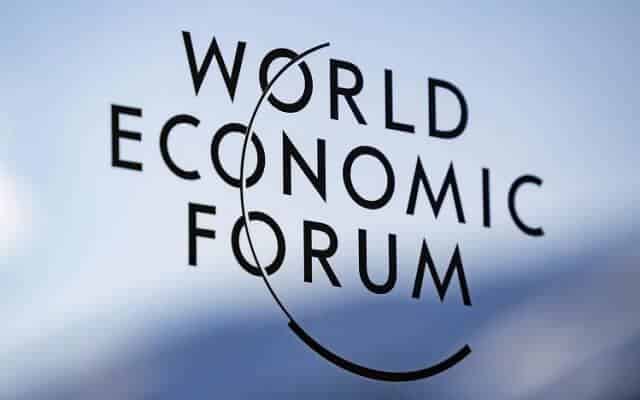Didier Toubia, Co-Founder and CEO of Aleph Farms, recounts the gathering’s most crucial lessons and expounds what it means for food systems.

I recently returned from The World Economic Forum’s annual meeting in Davos, where global leaders in business, politics and economics convened to discuss the most pressing challenges of our time and shape agendas to solve them.
This year’s theme – “History at a Turning Point: Government Policies and Business Strategies” – was a constant reminder that while the brightest innovators and risk takers can introduce world-changing ideas to drive positive impact, they often can’t implement those ideas at scale without collaboration with policymakers.
This is certainly true in making food systems more secure, resilient and sustainable – a goal that requires achieving system-based changes and overcoming high capital costs.
Why it’s crucial for food systems to be resilient
As recently as ten years ago, many thought of food security – how well people can access affordable and nutritious food – as a regional challenge, associated mostly with the developing world. Amid today’s troubled food systems, access to adequate nutrition is affecting growing portions of the Middle East, Africa and Asia, as well as agricultural powerhouses like Western Europe and the United States.
Our food systems have become more vulnerable because they are too focused on outputs and not focused enough on outcomes.
Over the last 50 years, our food systems have developed not to optimize accessible nutrition but rather to maximize specific outputs. In practice, this has meant producing more calories at lower cost, striving for higher corporate profits, and forcing accessible, high-quality nutrition to take a back seat. The fact that humanity throws away 30% of its food supply while nearly 800 million people remain chronically undernourished testifies to this unfortunate reality.
Beyond worsening hunger, over-prioritizing efficiency means relying heavily on optimized yet extremely fragile global supply chains. Current inflation-induced price hikes and bottlenecks in supply chains are reminding developing nations and OECD countries alike that people are only ever a meal away from inadequate nutrition.
The ongoing war in Ukraine has created food system ripple effects, including a wheat shortage that prompted India to halt exports of the crop. War may have been the immediate trigger, but a susceptible food system – one characterized by concentrated supply and a limited number of optimized crops and food sources – is the reason.
Covid-19 demonstrated that efficiency cannot be our only measure for a strong economy. Resilience is no less important, and achieving resilience requires shifting our food production approach from one that focuses on outputs to one that focuses on outcomes. By making our food systems more local, diverse, secure and inclusive, we increase certainty, improve resistance to shocks, and keep people fed.
Resilience and sustainability go hand in hand
The agriculture that produced food for the planet’s 1.6 billion people at the turn of the twentieth century cannot feed today’s population of 8+ billion, and certainly not more than that as the human population continues to climb. Intensive agriculture is associated with deforestation, loss of biodiversity, desertification and excessive loss of freshwater, all while changes in climate patterns and extreme weather events exacerbate our lack of basic natural resources.
There is good news, though. Transiting towards sustainable and regenerative agricultural practices can help us preserve ecosystems while increasing the nutritional density and quality of the food we eat. The only drawback is that lower-input, less intensive practices are typically less productive. As a result, it is imperative that we explore innovative solutions to support the transition towards these practices, including additional food sources like cultivated meat as well as algae and fermentation-based alternatives. This will let us keep up with increasing demand for food while keeping systems in balance.
Beyond enabling us to better manage natural resources and increase food quality, combining innovative production systems with sustainable agriculture increases the overall resilience of food systems by diversifying our food supply – a key to bolstering resistance to shocks.
Moreover, these production systems would allow us to produce food anywhere and anytime independent of water, land and climate, and with shorter, predictable and more resilient supply chains, making us less fragile in the face of future shocks. The result would be a feedback loop in which sustainability strengthens resilience and vice versa. The key is getting people to catalyze this loop.
The public and private sectors both play key roles
For innovation to support a transition of our food systems back into balance, business strategies and policy agendas need to align more firmly. When governments subsidize unsustainable agricultural practices based squarely on the amount of land farmed and fail to encourage more sustainable production, they introduce needless barriers that inhibit technology’s ability to strengthen food systems.
To add momentum to food innovation, national and local leaders should instead promote frameworks that make transitions more just and inclusive. Halting subsidies of unsustainable farming would incentivize leaders and communities to recognize food systems’ negative effects on public health and the environment and prioritize better production systems. Consequently, this would help consumers make more informed choices regarding food itself. When we account for food systems’ externalities, we also account for the true (higher) cost of purchasing and eating low-quality food.
For farmers to cooperate with changes towards sustainable agriculture and incorporate innovation, governments should also ensure that any associated transition risks and costs are spread out and shared. Such public facilitation makes innovation from the private sector more relevant, alleviating potential friction and kindling partnership between innovators, farmers and the general public.
Finally, in order to solidify a coherent public-private approach, we should reduce regulatory timelines and provide financial incentives to support the capacity of innovative food production systems to scale up.
It is my hope that when we convene again, leaders from the public and private sectors will have made further strides in propelling our world’s transition to more sustainable and resilient food systems.
